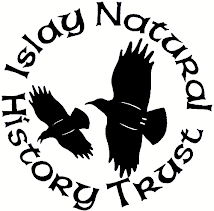The Project
As the sky
remains blue over Islay and the spring rolls on into summer, the fields are now
speckled with vibrant colours and abuzz with insects. The non-stop sunshine, lack of rain and light
winds have provided the perfect conditions for pollinators to dine on the
island’s banquet of flowers. Both the
plants and animals are in full swing, and so to is the INHT’s Verges and
Pollinator Project, requiring the team to bring out the high-vis waistcoats and
lather-up on the sun cream.
The initiative
aims to gather data on Islay’s pollinator-plant community this summer. Naturally, it consists of two parts: (1)
identifying the butterflies, bees and flies which are present and on which
plants they are feeding and (2) recording the number of plant species and the
density of flowers along the 112km of road currently chosen for survey. Knowledge of where certain plants are
flowering can, through management, encourage more plants along the road verges. Increasing the diversity and abundance of food
resources available to pollinators can increase their chances of
persistence. This is particularly
relevant since some pollinators are declining globally.
The Botanist
The
initiative requires a botanist (unfortunately, not the one brewed in
Bruichladdich, but The Botanist Foundation are funding this project) to survey
the road verges for flowering plants.
This is left to me, Rowan Hookham, a recent graduate from the University
of Glasgow to search the island’s damp roadside ditches for illusive plants – a
task which I oddly enjoy. Although I
graduated with an M.Sci. Zoology, I spent my final years of education
researching plant-insect interactions, where I learnt floral identification. The Islay Verges and Pollinator Project is a
great way for me to spent the summer brushing up on these botany skills and to
explore the island and its community a little better.
As a child
I explored much of the Hebrides with my family and I have always loved the
exposed island wildernesses. Islay
especially has a mix of different habitats: dunes, heathland, salt marshes,
grassland pastures and cliff edges making it the perfect place to study
plants.
So until
August I’ll be wandering the roadside gazing into the vegetation. Many people already have been curious and have
stopped to ask what I’m up to; this is one of the best parts of my the job as I
get to discus with both locals and tourists as to what they have seen. Some even believed, with the strange
equipment I had, I must have been looking for oil or using it as a divining
rod; however, I am not interested in the black or the blue, just the
greenery. So, if you see me on the road
give me a wave or stop for a chat.




















Keep up the good work. Thanks for taking the time to explain the project to us when we stopped in our car just outside Bruichladdich today.
ReplyDelete